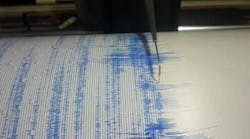WASHINGTON - A method of storing harmful greenhouse gases by injecting them below ground has likely triggered a series of earthquakes in Texas, some larger than magnitude 3, a U.S. study said Monday.
The findings in the Proceedings of the National Academy of Sciences mark the first time that carbon storage has been linked to temblors ranging from 3.0 to 4.4 in severity.
Researchers warned last year in the same journal that carbon capture and storage risked causing earthquakes, but there had been no direct evidence of such quakes until now.
The study focused on seismic activity in petroleum fields in Scurry and Kent Counties in northwest Texas, known as the Cogdell and Kelly-Snyder oil fields.
A process called water flooding was used in the Cogdell field to boost oil production from 1957 to 1982, and previous research has found that the practice caused small quakes in the area from 1975 to 1982.
More recently, methane and CO2 have been injected into the oil field at high volumes, said the research by Wei Gan and Cliff Frohlich at the University of Texas at Austin's Institute for Geophysics.
It was done in an area where the U.S. Department of Energy has funded research on the potential impacts of carbon capture and storage (CCS), a proposed technique for reducing greenhouse gas emissions by capturing CO2 and injecting it deep underground for long-term storage.
"Unusual and Noteworthy"
"The most significant result of this investigation is that gas injection may have contributed to triggering a sequence of earthquakes occurring since 2006 in and near the Cogdell field in Texas," said the study.
"This is an unusual and noteworthy instance where gas injection may have contributed to triggering earthquakes having magnitudes of 3 or larger."
There were 18 earthquakes of magnitude 3 or higher from 2006 to 2012, including a 4.4 earthquake on Sept. 11, 2011.
Of 93 quakes in the Cogdell area from March 2009 to December 2010, three during that time period were greater than magnitude 3.
Water Injection Not a Factor, Researchers Say
Water injection could not have explained these quakes, which came after a period of 24 years in which no earthquakes were detected, the researchers said.
The study was funded by the U.S. Geological Survey and the National Natural Science Foundation of China.
The study said it remains "puzzling why there are no earthquakes in similar nearby fields such as the Kelly-Snyder field and the Salt Creek field."
Like the Cogdell field, those other areas have undergone years of sustained injection of water and extraction of oil, followed by recent increases in gas injection.
The study authors said it could be that there are geological faults in the Cogdell area that susceptible to activity under pressure, and that such faults may not exist in the nearby fields.
More detailed geological models are needed to further explain why some areas respond differently to gas injection than others.
Copyright Agence France-Presse, 2013



